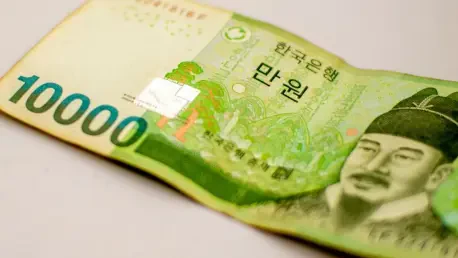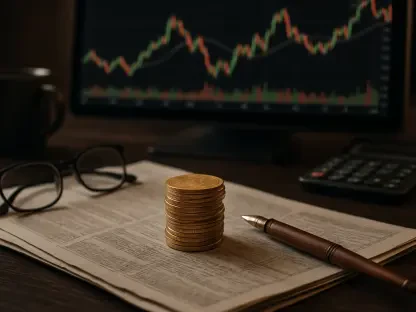The recent breach of the won-dollar exchange rate past the psychological barrier of 1,400 won has sent ripples through financial markets and communities alike, marking a two-month high at 1,412.40 won, and this surge, driven by a mix of economic uncertainties and geopolitical tensions, has profound implications for the South Korean economy and the Korean-American diaspora in the United States. For many, this isn’t just a number on a financial chart; it represents a tangible challenge affecting expatriates, students, and businesses on both sides of the Pacific. The complexities of trade negotiations between South Korea and the U.S., coupled with global economic pressures, have created an environment where the Korean won continues to lose ground against a persistently strong dollar. As stakeholders grapple with the fallout, understanding the forces behind this dramatic shift becomes essential to navigating the economic landscape ahead.
Economic and Geopolitical Drivers Behind the Surge
The primary catalyst for the won-dollar exchange rate climbing past 1,400 won lies in the ongoing trade negotiations between South Korea and the United States, which involve a staggering $350 billion investment package and currency swap arrangements. Despite recent interest rate cuts by the U.S. Federal Reserve, which might typically weaken the dollar globally, the Korean won faces unrelenting depreciation. This anomaly stems from South Korea’s high dependency on trade—ranking among the highest globally—making it particularly vulnerable to external economic policies and shifts. Historical volatility, such as peaks triggered by political events and tariff threats, further exacerbates the situation. Analysts caution that if current trade talks yield terms perceived as unfavorable for South Korea, the exchange rate could face even greater upward pressure, potentially nearing 1,600 won by next year. This scenario underscores the intricate link between bilateral agreements and currency stability in an interconnected global economy.
Adding to the economic strain are broader geopolitical factors that continue to unsettle markets and contribute to the won’s decline. Recent political developments, including past U.S. policy shifts and South Korea’s internal challenges, have historically driven the exchange rate to alarming highs, with some instances seeing it touch 1,487.6 won. The uncertainty surrounding future U.S. trade policies, especially potential tariffs, looms large over South Korea’s export-driven economy. Experts note that the nation’s structural vulnerabilities, such as reliance on key trading partners, amplify the impact of these external pressures. While temporary stability has been achieved in the past through strategic exemptions and discussions, the consensus among financial analysts is that volatility will persist in the near term. This persistent instability not only affects macroeconomic indicators but also trickles down to individual livelihoods, painting a complex picture of economic interdependence and geopolitical influence.
Impacts on the Korean-American Community and Beyond
For the Korean-American community, the surge in the won-dollar exchange rate presents a double-edged sword with significant financial implications, particularly for expatriates and international students residing in the U.S. Expatriates often face substantial losses when converting salaries paid in won to dollars, a burden worsened by high inflation rates in their host country. Many report monthly deficits that challenge their ability to maintain a stable lifestyle, with some even contemplating a return to South Korea as a more viable option. Similarly, international students struggle with diminished purchasing power as remittances from home lose value against the dollar. Parents in South Korea bear an increasing financial load to support their children abroad, highlighting how currency fluctuations transcend borders to impact family dynamics and personal aspirations in profound ways.
On the flip side, the strong dollar offers advantages to Korean-American travelers heading to South Korea, where their purchasing power is significantly boosted by the favorable exchange rate. Travel agencies catering to this demographic have noted a surge in interest, as trips become more affordable and attractive. However, this benefit is tempered by a broader community concern over the imbalance created by the one-sided surge. Many express a desire for a balanced resolution between the South Korean and U.S. governments to stabilize the rate at a sustainable level. Beyond individual impacts, the high exchange rate has led to a decline in Korean tourists visiting key U.S. destinations like Los Angeles, affecting local businesses reliant on tourism. This multifaceted impact illustrates how currency trends influence not just personal finances but also entire sectors, reflecting a shared hope for economic predictability amid ongoing uncertainty.
Future Outlook and Potential Stabilization Efforts
Looking ahead, the trajectory of the won-dollar exchange rate remains uncertain, with expert opinions leaning toward continued volatility in the short term, regardless of recent trade negotiation outcomes between South Korea’s Deputy Prime Minister and Finance Minister and the U.S. Treasury Secretary. While earlier discussions secured temporary relief through tariff exemptions, the overarching influence of U.S. policy shifts and South Korea’s economic vulnerabilities suggests sustained pressure on the won. Pessimistic forecasts warn of a potential climb beyond 1,500 won, with some projections reaching as high as 1,600 won if trade terms tilt unfavorably. Such predictions emphasize the need for robust strategies to mitigate risks tied to external dependencies. The focus now shifts to how both nations can navigate these challenges to prevent further depreciation, ensuring that currency fluctuations do not derail broader economic goals.
Reflecting on past efforts, it’s evident that stabilizing the exchange rate demanded decisive interventions and diplomatic finesse during critical junctures of trade talks. As negotiations unfolded, moments of reprieve were achieved, yet they often proved fleeting against the backdrop of global economic currents. Moving forward, actionable steps could include strengthening bilateral agreements that prioritize currency stability alongside trade benefits. South Korea might also explore diversifying its trade partnerships to reduce over-reliance on specific markets, thereby buffering against sudden policy shifts. For the Korean-American community and other stakeholders, staying informed about potential policy changes and preparing for financial adjustments will be crucial. These strategies, combined with a commitment to dialogue between the two nations, offer a pathway toward mitigating the adverse effects of a strong dollar, setting the stage for a more balanced economic relationship in the future.









